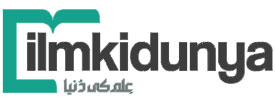-
 Home
Home
-
 News
News
Latest Educational News Stories
Daily update of all national, international news, picture stories, college / university announcements and educational events.
-
 Colleges
Colleges
Pakistan's Largest Database of Colleges and Universities
Explore Largest Directory of Private and Govt. Colleges, Universities and find best institute for your future Education.
-
 Courses
Courses
-
 Admission
Admission
-
 Lectures
Lectures
-
 Online Test
Online Test
Short Question
- 9th Class Physics Short Questions
- 9th Class Chemistry Short Questions
- 9th Class Math Short Questions
- 9th Class Biology Short Questions
- 9th Class Computer Short Questions
- 9th Class English Short Questions
- 10th Class Physics Short Question
- 10th Class Chemistry Short Question
- 10th Class Math Short Question
- 10th Class Biology Short Question
- 10th Class Computer Short Question
- 10th Class English Short Question
-
 Past Papers
Past Papers
-
 Date Sheets
Date Sheets
-
 Results
Results
Exam Results 2024
Check online Results 2024 Matric Inter BA BSc B.Com MA MSc M.Com CSS PCS MCAT ECAT of all educational boards and universities in Pakistan
-
 Study Abroad
Study Abroad
Study Abroad Programs and Opportunities for Pakistani Students
Explore free study abroad search to find programs, consultants, events to study in USA, UK, Australia, China, Malaysia and many others.
-
 Jobs
Jobs
-
 Tutors
Tutors
-
 More
More
-
 Apps
Apps
ICS Part 1 Physics
Chapter 2 Test
Start Chapter 2 Test
MCQ's Test For Chapter 2 "Physics ICS Part 1 Chapter 2 Online Test"
Try The MCQ's Test For Chapter 2 "Physics ICS Part 1 Chapter 2 Online Test"
-
Total Questions17
-
Time Allowed20
The rate of change of momentum is
In projectiel motion horizontal rane depends upon.
A body thrown upward making certain angel with the horizontal and moving freely under the action of gravity is called.
As rocket moves upwrd during its journey, then its acceleration goes on.
If A x B points along positive z-axis, then vector A and B must lie in.
Motion of projectile is.
Rocket ejects the burnt gasses at a speed of over (consuming fuel at rate of 10000kg/s)
During the projectile motion the horizontal component of velocity
The resultant of two forece 3 N and 4 N actign parallel to each other is.
Dimensions of impulse are similar to dimensions of.
The SI unit of momentum is.
For what angle of projection projectile has maximum horizontal range
The scalar prodcut of two vectors A and B is zero when
The angle at which dot product becomes equal to cross product.
SI Unit of impulse in.
The scalar product of two vector is maximum if they are.
The range of projectile is same for two angles which are mutually.
11th Class ICS Physics Chapter 2 Test
Top Scorers Of Chapter 2 "Physics ICS Part 1 Chapter 2 Online Test" MCQ`s Test
-
H how what 11 - Jan - 2025 01 Min 14 Sec 17/17 -
H Hassnain Raza 24 - Dec - 2024 01 Min 38 Sec 17/17 -
Z Zahida Javaid 31 - Dec - 2024 01 Min 34 Sec 16/17 -
B Biology Triangle 30 - Dec - 2024 02 Min 42 Sec 16/17 -
S Swera Zahid 23 - Oct - 2025 06 Min 20 Sec 15/17 -
R Rabeeha Piracha 11 - Dec - 2024 06 Min 28 Sec 15/17 -
R ROHAAN AHMED 07 - Dec - 2024 01 Min 44 Sec 14/17 -
A Abdul Rehman 05 - Dec - 2024 01 Min 52 Sec 13/17 -
S Shaoib malik 16 - Jan - 2025 01 Min 57 Sec 13/17 -
M Minahil Butt 13 - Dec - 2024 02 Min 31 Sec 13/17 -
S ShoaibAkram ShoaibAkram 02 - Dec - 2024 03 Min 12 Sec 13/17 -
C CH's. Home (M.SAIF) 05 - Dec - 2024 03 Min 28 Sec 13/17 -
A ABNxBOSS 10 - Nov - 2025 04 Min 08 Sec 13/17 -
M Maryam Bibi 06 - Jan - 2025 01 Min 18 Sec 12/17 -
D DEMON GAMERs 13 - Dec - 2024 01 Min 29 Sec 12/17
FSc Part 1 Physics (New Book) Chapter 2 Important MCQ's
| Sr.# | Question | Answer |
|---|---|---|
| 1 |
If A x B = 0 then it is concluded that. |
A.
A and B ar e to each other
B.
A and B are parallel to each other
C.
A and B are position vectors
D.
A and B are unti vectors |
| 2 |
The rate of change of momentum is |
A.
Force
B.
Impulse
C.
Acceleration
D.
Power |
| 3 |
Before launch of any rocket the mass of fuel of the rocket is about |
A.
60% of rocket mass
B.
50% of rocket mass
C.
40% of rocket mass
D.
80 % of rocket mass |
| 4 |
Elastic collision involoves |
A.
Loss of energy
B.
Gain of energy
C.
No gain, no loss of energy
D.
No relation between energy and elastic collision |
| 5 |
Rocket ejects the burnt gasses at a speed of over (consuming fuel at rate of 10000kg/s) |
A.
4000 m/s
B.
400 m/s
C.
40000 cm/s
D.
400 cm/s |
| 6 |
If A.B =0 when vector A and B are parallel or anti paralled, then either A or B is a |
A.
Equal
B.
Null Vector
C.
Perpendicular
D.
Not Zero |
| 7 |
The Fs of force F of magnitude 30 N making an angle of 60o with x -axis |
A.
7 N
B.
15 N
C.
10 N
D.
5 N |
| 8 |
If a force of 10 N makes an angle of 30o with x-axis its y-component is given by |
A.
8.66 N
B.
0 N
C.
0.776 N
D.
5 N |
| 9 |
The scalar product of two vectors will be maximum if they are. |
A.
Parallel
B.
Perpedicular
C.
Anti Parallel
D.
All of these |
| 10 |
The magnituede of cross-proecut and dot product of two vectors are equal, the angle betwene the vectors is. |
A.
45o
B.
Zero
C.
180o
D.
90o |


















